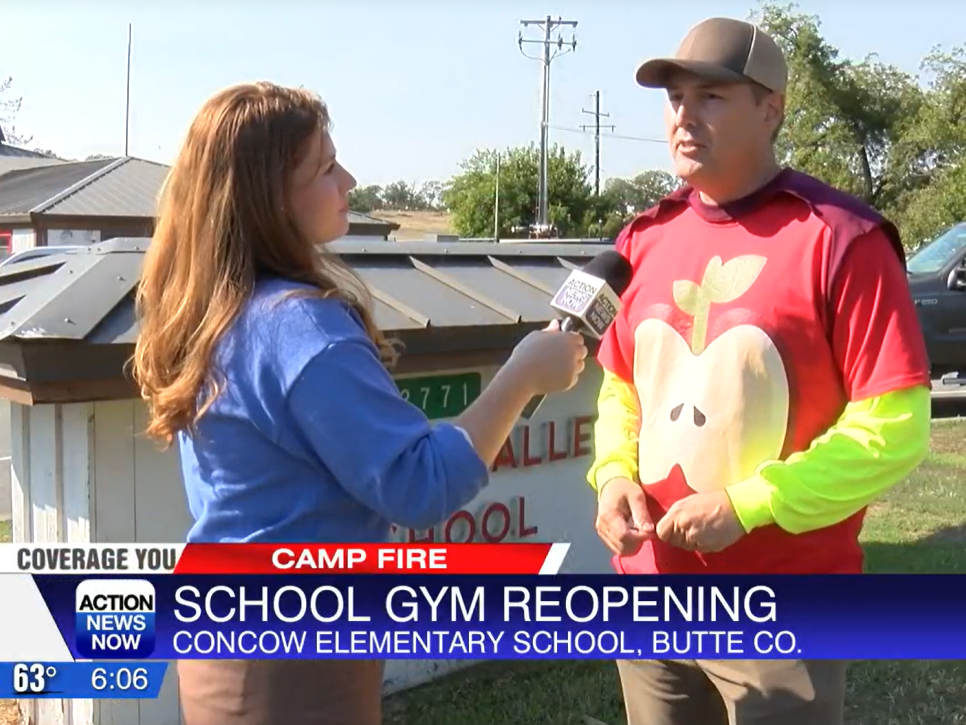Most advice on this topic seems very basic – mostly telling prospective teachers to practice interview questions and focus on soft skills to land the first teaching job. While the first page Google results do not give bad advice, it just screams “blogger on assignment.” Close those tabs and let’s hear from a superintendent / principal with over twenty years of experience in the field.
How to get your first teaching job…
Let’s start tough…

Are you willing to move out of the area?
People who build bridges have to move to locations where bridges are being built.
School districts near colleges pump out teacher candidates that want to remain in the area. Districts close to these colleges are typically in high demand. If you are willing to move, then find either the most urban district or the most rural district that is far away from teacher preparation programs. Apply to these schools… Oftentimes, you will have the added bonus of being treated really well and making a true impact in these positions.
Additionally, being open to relocating can broaden your career opportunities in education, allowing you to explore regions where your skills and expertise are highly valued, while potentially experiencing diverse teaching environments and making a meaningful impact in communities that may have a greater need for dedicated educators.
I’m staying put.
If you are attempting to stay in a specific geographic location then look for the least competitive school districts in the region. Typically, but not always, the least competitive districts either pay less or they encompass areas of higher crime or lower socio-economic demographics. An interesting caveat about schools that pay less, sometimes these schools are in more affluent areas. Schools in less affluent areas are helped more by state and federal dollars. Check the county office of education website for a list of districts in your area that you can research for best fit.
By considering the least competitive school districts in your desired location, you can still find fulfilling teaching opportunities that align with your geographic preferences. It’s important to recognize that lower competition can sometimes be attributed to factors like salary or demographics, but this should not deter you from exploring these districts, as they often present unique challenges and opportunities for growth, and making a positive impact in such communities can be exceptionally rewarding. Conducting thorough research through your county’s office of education website can help you identify the best fit and find a school district where you can thrive while staying in your preferred area.

Apply and be available when districts are desperate.
Let’s start with understanding the hiring season for teachers.
In California, March is the beginning of hiring season because if districts choose to not renew the contract of a first or second year teacher, they must give notice by March 15th. Sometimes districts also give an incentive to teachers considering retirement to let the district know before hiring season. Therefore, in spring districts attempt to hire for known unfilled fall positions. As much as a district attempts to fill positions needed for fall early, new variables are added to the mix late. There are retirements, teachers moving schools or districts, teachers leaving the profession, maternity leaves, medical leaves, summer moving, higher enrollment than expected and so many other reasons to districts need to hire teachers after the Spring hiring season. Use this to your advantage…
If you apply to positions near the school’s start date, be ready to interview and be onboarded quickly. You will be seen as a savior and administrators will sigh with relief that someone was available and interested in a last minute position.
Timing is crucial when it comes to teacher hiring, and being flexible with your availability can be a game-changer. While the traditional hiring season begins in March in California, it’s important to remain vigilant throughout the year because unexpected vacancies can arise due to various reasons. Being prepared to interview and onboard quickly when positions become available, especially near the start of the school year, can make you a valuable asset to districts in need. Your willingness to step in during last-minute situations can not only help you secure a position but also earn the gratitude of administrators who are relieved to find a dedicated and responsive teacher to fill the gap.

There is a substitute shortage even in districts that pay $200+ per day.
On the off chance you were unable to land a position for the fall then become a substitute. Substitute teach while applying for the one-off positions popping up during the fall. In my district and region, subs get paid approximately $200 per day! Not a bad way to bide your time. There are no medical benefits but might as well enjoy the $33 per hour and the ability to clock out at 3pm while you can.
Becoming a substitute teacher can be a strategic move, especially in districts facing a substitute shortage, where the daily pay rate can be attractive. While you’re actively applying for full-time positions, substitute teaching allows you to gain valuable classroom experience, build relationships with school staff, and showcase your teaching skills. It’s an excellent way to stay connected with the education community and potentially increase your chances of securing a long-term position when it becomes available. Additionally, the flexibility of substitute teaching can provide you with the freedom to continue your job search while enjoying a decent income and the perk of clocking out at 3 pm, allowing you to make the most of your time while pursuing your dream teaching job.
The next desperate time of year for districts is winter.
Just know that the next natural part of the year to ask a teacher to not come back is the winter break. Notice during the winter break, there will be positions open up. Administrators are hoping and praying for mid-year candidates to typically fill positions of teachers that left during the winter break. Sometimes teachers or districts will stick out a bad situation until about winter break if they will not complete the entire school year. Usually, a departure will coincide with the end of a semester or trimester. Just know that you will be thought of as a savior but you will also likely be walking into a difficult situation because of drama surrounding the mid-year departure of a teacher.
Indeed, the winter break can present a unique opportunity for teachers seeking mid-year positions. While it’s true that these vacancies may come with some challenges, your willingness to step in during such critical times can be greatly appreciated by school administrators. It’s essential to approach mid-year positions with flexibility, adaptability, and a positive attitude. By embracing the role of a problem solver and a quick learner, you can navigate the potential classroom dynamics effectively and make a significant impact on your students’ learning experiences. Remember that you have the chance to be a stabilizing force in the midst of change, and your commitment to education can help both you and your students thrive in the face of adversity.
Your interview may include a lesson.
All of our teachers had to present a lesson during the interview process. Some schools do a first interview of questions and second round of teaching. We just do in one 45 minute session. In the question portion of the interview you have a 50/50 chance of either being rated on a score system or people may just take notes because they are going off their gut. In my experience, it just depends on the competitiveness of the district. The answers to these questions need to hit popular educational keywords. Research the buzzwords – Do you know education and teaching concepts? “Can you tell us about a time when…” There is often a lesson required to get a teaching job. Schools make much better choices in teacher selection when seeing the teacher in action. Our hiring process has minimized the question portion to just 15 minutes because the answers matter so little in comparison to the lesson. Even if you are an inexperienced new teacher, plan to show an interview panel that you are a teacher that can teach. Even when there is only one candidate for the position, the candidate is still required to show us they can teach. It has become a right of passage and best practice in the profession.
Still taking classes for your credential? Become a paid intern.
Many times these days, an internship is paid at step 1 column 1 with full benefits even without a full credential. This is a good option for those in teacher preparation programs that work with partner districts to place interns. The placement is usually, but not always, done in hard-to-staff districts that need teachers but are not able to fill positions. A paid internship can turn into a long-term position because the intern becomes part of the teaching staff. To get this position, the intern does need to apply and interview like any other teacher candidate. Look for job postings that will accept intern candidates – sometimes it will say somewhere in the posting.
Jump in and volunteer
I can remember one candidate that jumped in and volunteered at one of the school’s events. The school needed supervision at one of the stations during a carnival. We were watching and she was amazing. Showed herself to be great with students and just helped us see that she would be an asset to the team. Consider ways to be seen as an amazing fit for the team.
Final thoughts
The first bonafide teaching job with salary, benefits, classroom assignment, and contract is the hardest one to land. It’s the whole chicken and the egg issue. You need experience to land a teaching job but to get a teaching job you need experience. Attempt these strategies to sidestep landing the first teaching job.
Hopefully this helps with:
- How to get your first teaching job
- How to find your first teaching job
- How to start your teaching career
- How to get hired as a teacher
- Superintendent Productivity Boost: The Power of a Small Pocket Notebook in Education Leadership
- Inside the World of School District Superintendents: An Experienced Superintendent’s Comprehensive Insights into Roles, Responsibilities, Hiring, Qualifications, Turnover, Selection Process, Contracts, and Requirements
- Superintendent’s Guide to National Disaster Preparedness Month: Equipping Schools for Safety and Resilience
- A Superintendent’s Blueprint for Cultivating Creativity and Growth through Art during National Arts in Education Week and National Arts & Humanities Month
- The Ultimate Guide to National Crayon Collection Month by the Superintendent: Unveiling Secrets, Crayon Recycling, Landfill Impact, Creative Uses, Environmental Awareness, and More



